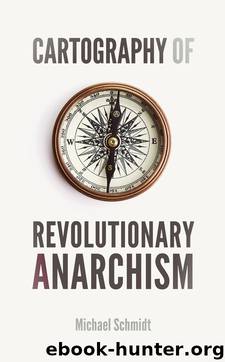Cartography of Revolutionary Anarchism by Schmidt Michael

Author:Schmidt, Michael [Schmidt, Michael]
Language: eng
Format: epub
Publisher: AK Press
Published: 2013-05-24T05:00:00+00:00
The Durrutist and neo-Makhnovist response: The “Revolutionary Junta” Pushes for a Fresh Revolution
During the Spanish Revolution, at the height of the Third Wave, anarchists faced the same question raised in the 1920s by the Platform: how to organise in a free, yet effective, manner. Aware that the communists and reformists within the trade unions were selling out the revolution, a militant group of anarchists formed in 1937 to maintain the revolutionary hard line. The Friends of Durruti (AD) were named after the brilliant Spanish anarchist railway worker and guerrilla fighter, Buenaventura Durruti, who died defending the capital of Madrid against the Francoist forces in 1936. The AD was founded by rank-and-file CNT militants, key anarchist hardliners, and anarchist militia, in particular from the famous Durruti Column and the Iron Column. They opposed the “revolutionary” state’s order to turn the militia into an ordinary authoritarian army, with class divisions and a murderous regime of punishment.
In 1938, encouraged by the Spanish Communist Party, the counter revolution was in full swing, in the rear of and at the revolutionary front. The AD published Towards a Fresh Revolution, a strategic document that critiqued the reformist tendency within the CNT, one which had lead to confederated collaboration with bourgeois, nationalist, conservative, and Bolshevik forces in the Republican government. The document called for a “revolutionary junta” (meaning a “council” or “soviet”) to maintain the revolutionary character of the war by means of the anarchist/syndicalist militia, and for the economy to be placed entirely in the hands of the syndicates—the revolutionary anarcho-syndicalist unions which made up the base of the CNT. It was, in effect, a call by the organised revolutionary working class under arms to dissolve the bourgeois Republican government and replace it with a decentralised militant counter-power structure. In the document, the AD also demanded the seizure of all arms and financial reserves by the workers; the total socialisation of the economy and food distribution; a refusal to collaborate with any bourgeois groups; the equalisation of all pay; working class solidarity; and a refusal to sign for peace with foreign bourgeois powers.
Like the Makhnovist Platform, the AD manifesto was also labelled vanguardist and authoritarian, this time because of a misunderstanding, mostly among English-speakers, of what was meant by the revolutionary junta. In the AD’s usage, junta did not have the connotations of a ruling military clique that the term carries in English. It was not to be an “anarchist dictatorship,” supplanting the bourgeois government with an anarchist one. Its task was merely to co-ordinate the war effort and make sure that the war did not defer or dismantle revolutionary gains. The rest of the revolution was to be left in civilian worker hands.
In 1945, the Bulgarian platformist FAKB, founded in 1919, called a congress at Knegevo, in the capital city of Sofia, to discuss the repression of the anarchist/syndicalist movement by the Fatherland Front government. This government had been installed by the Red Army and consisted of Communist Party and Agrarian Union members and fascist Zveno officers, involved in the 1934 fascist putsch.
Download
This site does not store any files on its server. We only index and link to content provided by other sites. Please contact the content providers to delete copyright contents if any and email us, we'll remove relevant links or contents immediately.
| Anarchism | Communism & Socialism |
| Conservatism & Liberalism | Democracy |
| Fascism | Libertarianism |
| Nationalism | Radicalism |
| Utopian |
The Secret History by Donna Tartt(18751)
The Social Justice Warrior Handbook by Lisa De Pasquale(12082)
Thirteen Reasons Why by Jay Asher(8737)
This Is How You Lose Her by Junot Diaz(6701)
Weapons of Math Destruction by Cathy O'Neil(6085)
Zero to One by Peter Thiel(5638)
Beartown by Fredrik Backman(5546)
The Myth of the Strong Leader by Archie Brown(5375)
The Fire Next Time by James Baldwin(5199)
How Democracies Die by Steven Levitsky & Daniel Ziblatt(5096)
Promise Me, Dad by Joe Biden(5036)
Stone's Rules by Roger Stone(4989)
100 Deadly Skills by Clint Emerson(4798)
A Higher Loyalty: Truth, Lies, and Leadership by James Comey(4797)
Rise and Kill First by Ronen Bergman(4658)
Secrecy World by Jake Bernstein(4594)
The David Icke Guide to the Global Conspiracy (and how to end it) by David Icke(4557)
The Farm by Tom Rob Smith(4404)
The Doomsday Machine by Daniel Ellsberg(4375)
